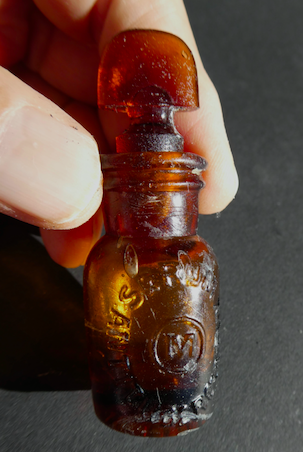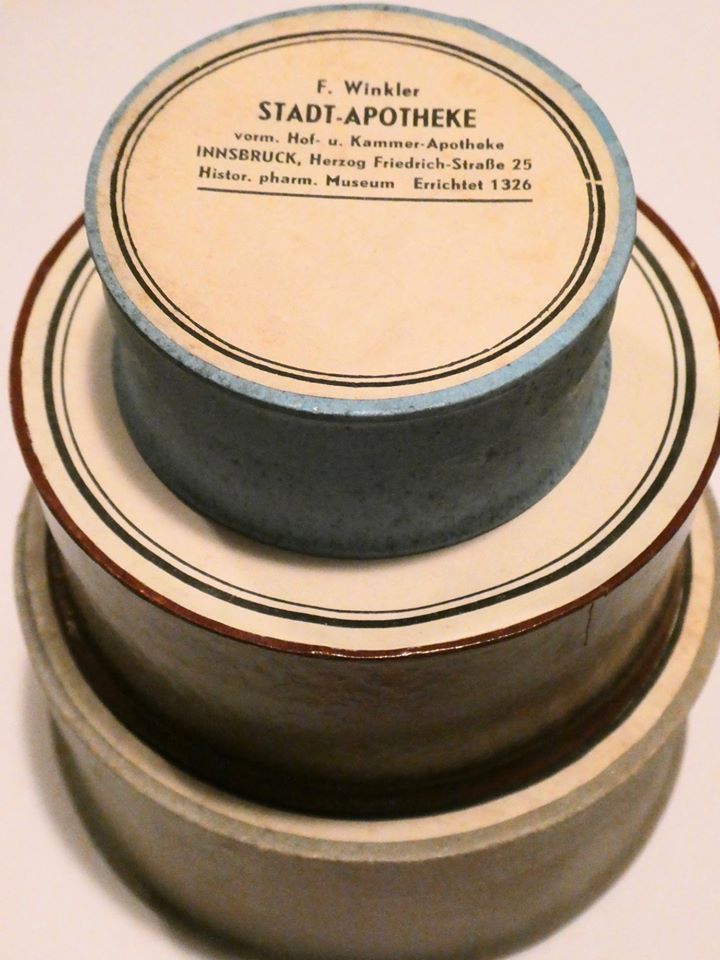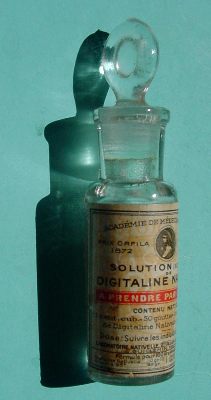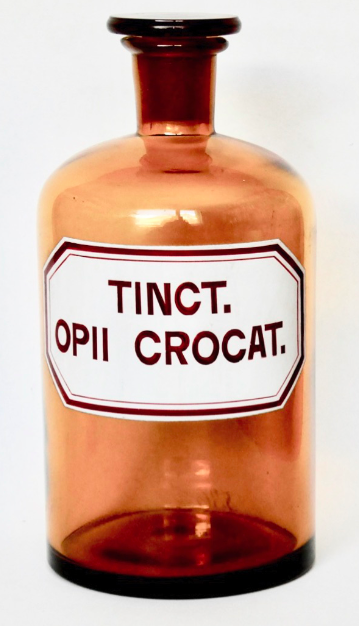Pharmacy |
||
Antituberculosis-Serum by MARMOREK |
||
In 1903 Alexander MARMOREK (1865-1923) produced an "Anti-tuberculosis-serum", which disappointed the scientific wold.
Exponat 6,7 cm high glass, unearthed in Odessa ... "Serum Anttuberculeux" - in the center a big "M" for MARMOREK |
Pharmacy |
||
Round cardboard box (10) |
||
in 1900 Ludwig Winkler (1873-1935) was a „Kammerapotheker seiner k.k. Hoheit des Erzherzogs Eugen von Österreich“ - a "Court pharmacist" in the Innsbruck "City pharmacy".
We present three boxes used in 1950 by his son F(ranz) Winkler (1901-1953). Please note the remark "historical pharmacy museum" - a museum still existing and showing precious and seldom documents and devices used in this pharmacy since the 16th century
|
Pharmacy |
||
Vial with DIGITALINE |
||
"Nativelle prepared digitaline cristallisée, which at last was believed to be pure. Meanwhile a commercial distinction had been established between German digitalin (originating from Walz's preparation), an amorphous powder easily soluble in water and alcohol, less soluble in chloroform, and very little soluble in ether; and French crystalline digitalin (that of Homolle and Quevenne, and Nativelle), easily soluble in chloroform and alcohol, but hardly soluble in water and ether. In this connection it may be stated that the French Codex gives detailed directions for the preparation of both digitaline amorphe and digitaline cristallisée, the yield of the latter being 1 gram from each kilogram of leaves. To Schmiedeberg (1874) we are indebted for a critical study of the more important digitalins of commerce. He arrived at the conclusion that these preparations were composed mainly of the following principles: Digitonin, digitoxin, digitalin, and digitalein. The first is an inactive glucosid, while the three others have the property of acting upon the heart, digitoxin possessing this power in a most pronounced degree. The more recent researches of Kiliani have materially extended our knowledge of the chemical nature of these substances.
|
Pharmacy |
||
Opium, tincture with saffron (2) |
||
The tincture of opium with an addition of saffron is the eldest preparation of opium used by the classical medicine, as saffron and opium have similar proprieties, both components are complementary.
In 1684 the London doctor Thomas SYDENHAM (1624-1689) introduced it in therapeutics and named of "Laudanum". |







